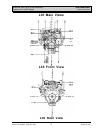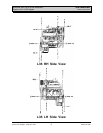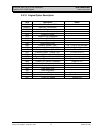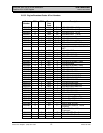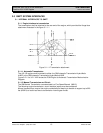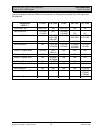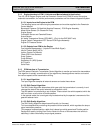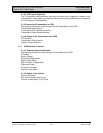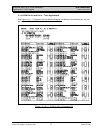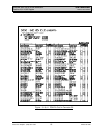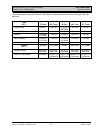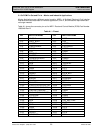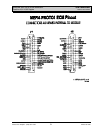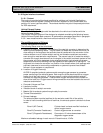
ENGINE APPLICATION MANUAL GM Powertrain
Gasoline 4.3L V6 90 Degree Revised: 08/15/2000
File: c:\data\manuales\v6-truck\am43v6#3.doc
Contact:Luis Nespolo - (248) 857-1558 Printed: 8/15/00
15
3.1.2 Engine Interface to PCM ( Vehicular and Marine/Industrial Application)
The 4.3L V6 90 Degree Engine uses the Powertrain Control Unit (PCM) to control the engine,
automatic transmission, the vehicle performance parameters and the onboard diagnostic system.
3.1.2.1 Inputs from the Engine to the PCM
The following Inputs are internal engine parameters and must be supplied to the Powertrain
Control Module:
Barometric Pressure (Or Manifold Absolute Pressure) - POA Engine Assembly
Mass Airflow Sensor (Air Cleaner/Air Duct)
Engine Speed
Crankshaft Sensor and Camshaft Sensor
Knock Sensor
Air intake Temperature Sensor (POA MAF) - (Only for the GMT-800 Truck)
Engine Coolant Temperature ECT Sensor-POA Engine Assembly
Engine Oil Pressure Sensor
3.1.2.2 Outputs from PCM to the Engine
Fuel Injectors Management – (Injection Pulse Width Signal)
Idle Air Control Motor (IACV)
Ignition Control Coil Module
Linear EGR Valve Solenoid
Evap. System
Purge Solenoid
Secondary Air (AIR) System
A/C Control
Serial Data
3.1.3 PCM Interface to Transmission
The PCM uses an Electronic Transmission Control Algorithm to monitor and control the transmission.
This algorithm is actually a combination of four algorithms, these algorithms monitor and control
the various aspects of the transmission shifting.
3.1.3.1 Input Algorithm:
The Input Algorithm samples all external sensors and scale these values.
3.1.3.2 Shift Control Algorithm:
The Shift Control Algorithm determines which gear ratio the transmission is currently in and
changes the state of the control solenoid to accomplish a shift.
The shift pattern is controlled by a set of tables. These contain the vehicle speed at which the
shift is to occur as a function of throttle position.
In the manual mode, the current gear may be determined by the operator’s movement of the
gearshift selector lever.
3.1.3.3 Shift Quality Algorithm:
The Shift Quality Algorithm determines shift quality (or firmness).
This is accomplished by controlling the pressure control solenoid, which regulates the torque
signal modulation pressure.
This pressure is determined by a table that is based on vehicle speed and Throttle position.
Garage Shift quality (shifting from Park or Neutral to Drive or Reverse when the vehicle is
stationary) is also controlled by torque signal pressure.




